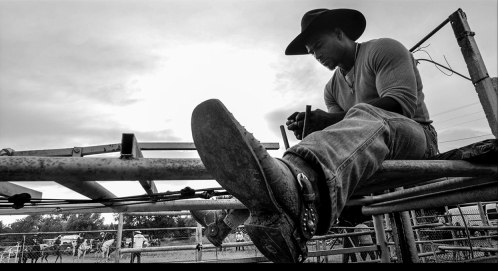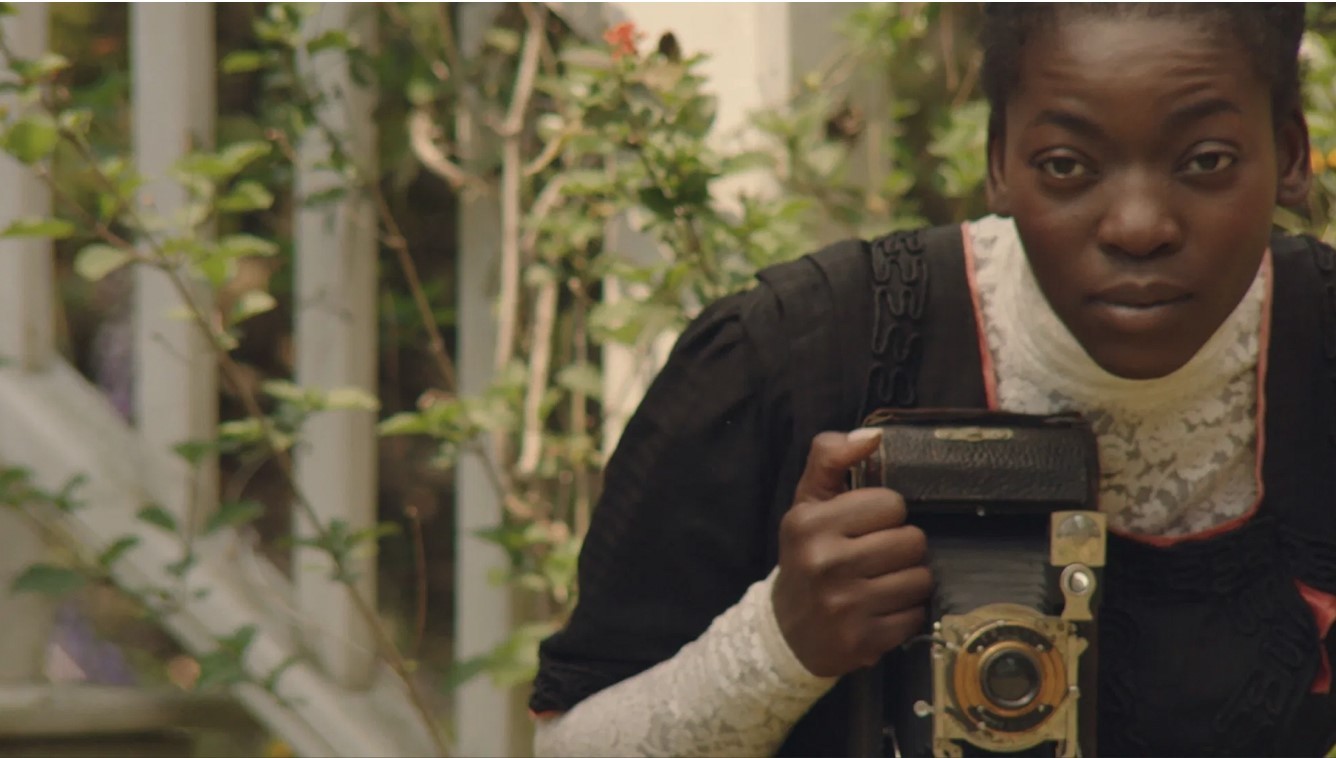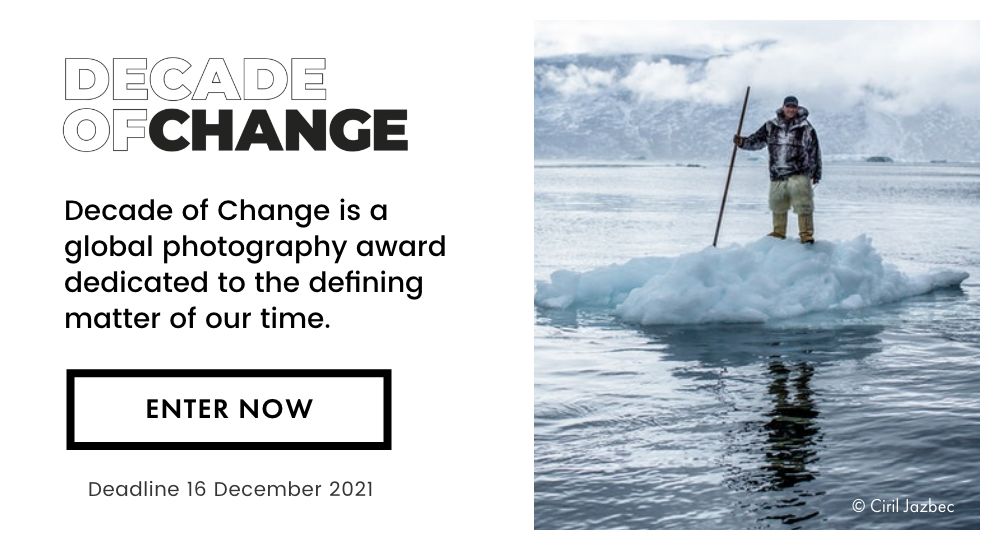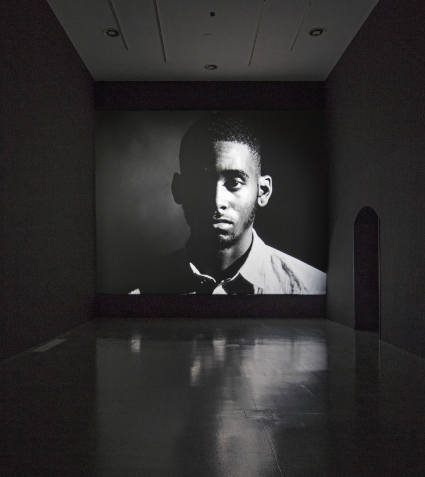The Brown University professor’s new book considers the work of contemporary Black artists and the command of their practise
What can we learn from reframing our understanding of a ‘gaze’? Known for her disruptive analyses and ‘grammar of Black futurity’, Black feminist theorist Tina Campt is congregating a new school of thought by investigating Black life through the lens of art for its ability to ‘solicit visceral responses’ and ‘challenge dominant viewing practices’. Campt is professor of humanities, modern culture and media at Brown University and author of the newly released A Black Gaze: Artists Changing How We See (2021), published by MIT Press. It examines pioneering Black contemporary artists who are shifting the very nature of our interactions with the visual, through their creation and curation of a distinctively Black gaze. The book surveys the works of Simone Leigh, Deana Lawson, Okwui Okpokwasili, Dawoud Bey, Luke Willis Thompson, as well as Kahlil Joseph and Arthur Jafa’s videos on the everyday beauty and grit of the Black experience – requiring viewers to do more than simply look, but engage in what Campt calls the ‘affective labour’ commanded by this Black gaze. Campt’s acclaimed book Listening to Images (Duke University Press, 2017) was among the earliest that sparked a journey of artists reading into her practice, and now, her reading into theirs.
Ethel-Ruth Tawe: Can you tell us a little about yourself, and how you arrived at these innovative ways of engaging with images and archives?
Tina Campt: I describe myself as a Black feminist theorist of visual culture and contemporary art. I say that because it charts the routes that I’ve taken to do the work that I do. [Early on] I encountered what many people tell you: that ‘there is no archive’. I had a very tenacious and supportive dissertation adviser who said: “If there is no archive you have to create your own.” So I began ‘reading’ the absences and silences in the archives.
I started thinking about the photographs that people want to understand to say nothing – serial photographs, highly formulaic photographs, in particular compelled photographs: mugshots, prison, passport, ethnographic photographs that are all supposed to be so mundane that they ‘say nothing’. But I realised we’re actually not listening to them. I started trying to articulate what it means to ‘listen to images’, not necessarily only for the stories that they tell, but for the impression and impact that they make upon us. We sometimes want to think of photographs as documents or as factual, but we respond to them viscerally, emotionally, and affectively in both positive and negative ways. If we examine those responses, we learn as much about ourselves as we do about what is captured in an image.
Tawe: Your latest book, A Black Gaze, examines the shift in Black contemporary visual culture. You ended your book, Listening to Images, by discussing the contemporary, so it feels like natural progression. But what made you choose to examine the particular artists you write about and how they are defining this Black gaze?
Campt: I was seeing really powerful artistic works that were speaking to the circumstances of Black folks in this moment of extraordinary anti-blackness. They were as powerful as any political treatise or anything textual… and it gripped me. I wanted to understand why I was responding so strongly and what was different. When I say different, I don’t mean this was the first time that Black artists have been able to make work that addresses the political duress in which we live; that has been happening for some time. What I came to understand was that their work was demanding something of me and many others.
Their work [can be] troubling and uncomfortable. Arthur Jafa’s work can make you squeal, so can Deana Lawson’s, and Luke Willis Thompson’s work. Yet, that discomfort was being embraced in the art world. Suddenly it wasn’t work that was pleasing, funny or abstract, it was totally in-your-face. It wasn’t so much of a gut punch, but more about a sense of wounding. It was something that had completely taken the ground from under me, and I didn’t know how to position myself in relation to it. What I call that – what they make us position ourselves to – is ‘the precarity of Black life in the 21st century’ and the ways in which Black bodies have become disposable. [These artists] twin pain, trauma, loss, with Black people’s virtuosity in survival, and the capacity to inhabit tremendous joy in spite of all these things. That twinning is something that disorients you. What you end up doing in response to this work is a lot of affective labour in a way that changes how you see Blackness.
The reason I called it A Black Gaze is because I want to challenge the idea that the gaze is only dominant or top-down. Black folks have a gaze. It’s not really about getting others to see through our eyes, but to understand that their relationship is not one of mastery. There are ways of presenting Black visuality that alienate white people and they have to come to terms with that; which means you are confronting a Black gaze. It was an experience of artworks making demands upon me.
Tawe: Some ideas you theorise, such as ‘reassemblage in dispossession’, make me think of how many contemporary Black artists are drawn to the medium of collage, using it to reinterpret multilayered ideas. What are your thoughts on the collage medium in relation to this Black gaze?
Campt: Collage is not simply a confrontation with a single media in one moment in time. It is the layering and the sedimentation of different moments, memories, histories that come into contact and then overlap and juxtapose. That’s one of the things I think is so marvellous about collage, and what it offers artists to have this multimedia and multitemporal encounter both within their work and in relationship with those that view it.
Tawe: In the age of Covid-19, engaging with physical works has become complicated. How do you listen to images digitally, without the haptics that much of your practice is centred on?
Campt: It has been a huge challenge. I’ve had to confront the extent to which I rely on physical encounters with artworks. I think it’s one of the reasons why comparatively, I haven’t written as much. It’s because I hadn’t been able to visit art and sit with it.
To answer your question, ‘how do you listen to images digitally?’: with great difficulty. I’m very excited about the fact that museums and galleries are reopened. A couple of months ago I was part of a conversation with Garrett Bradley about her work. [Her film ‘America’] was showing at the Museum of Modern Art. I went there just after the museum reopened and it was an extraordinary experience. It reminded me there’s nothing like it. You cannot compare seeing something on the screen to seeing it in person. It made me cherish the gift of seeing art installed as the artist wants it to be. To respect what it means to have the artist present something to you as opposed to you consuming it in a way you think is OK. There are interactions that are very specific to that encounter.
A Black Gaze: Artists Changing How We See is published by MIT Press and is available now
The post In Conversation with Tina Campt, on A Black Gaze: Artists Changing How We See appeared first on 1854 Photography.






